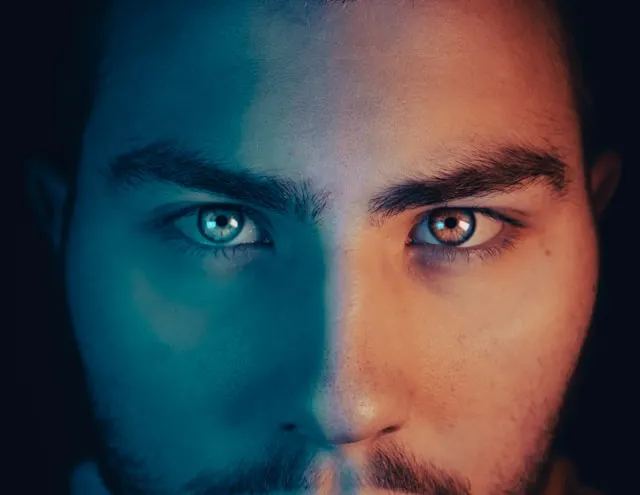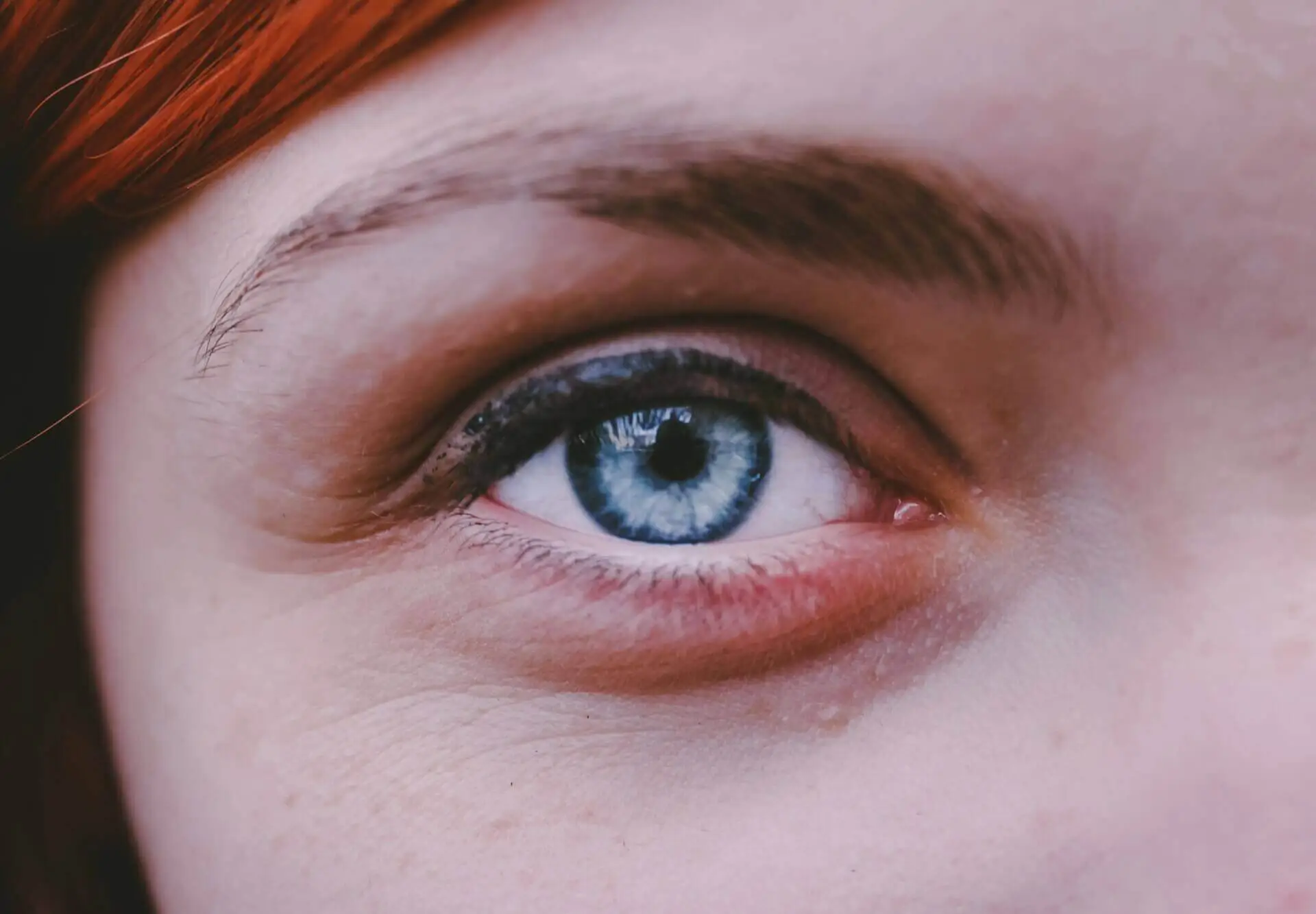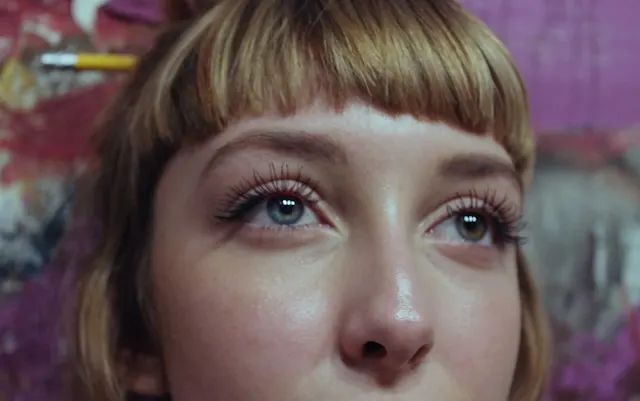Have you ever met someone with captivating eyes of two different colors?

It's pretty rare, affecting only about 6 in every 10,000 people in the United States. This condition is called heterochromia or heterochromia iridium, and it comes from gene variations that control eye color. We'll explore what causes these variations and whether treatment is necessary for heterochromia.

Eye Color: More Than Just Genes
Forget the simple brown-dominant, blue-recessive rule! Eye color is a lot more complex. While genes are involved, it's not just one gene that is in charge. Several genes work together to decide what color your eyes will be.
The key player in eye color is melanin, a pigment that's also responsible for skin tone. Brown eyes have the most melanin, while blue eyes have little. There are many shades in between, though. Interestingly, even though brown eyes have more melanin (and might seem more dominant), it's not always a sure thing. Other genes can influence the outcome.
So, even if both parents have brown eyes, their child might not. Likewise, a child with one brown-eyed and one blue-eyed parent could have either color eyes.
Brown eyes are the most common, especially in warmer parts of the world. Blue eyes, on the other hand, have no melanin in the front layer of the iris. This lack of pigment makes light scatter, creating a blue appearance.
Standing out from the crowd? Green eyes might be your ticket. With only 2% of the world's population sporting this emerald hue, it's the rarest eye color around. The secret to this captivating color lies in a special combination: a touch of melanin and the way light bounces around inside the eye.
Now, let's talk about albinism, a condition where the body produces little to no melanin. This often results in very light skin, hair, and, typically, light blue eyes. In even rarer instances, someone with albinism might have very little pigment in their irises, making them appear clear. This lack of pigment can sometimes cause the blood vessels behind the iris to show through, giving the eyes a pinkish or reddish tint.
Can Your Eye Color Change?
Most babies start with beautiful blue eyes, but that doesn't always last. As their bodies produce more melanin (a pigment), their eye color usually settles on a permanent shade by around age one. Brown is the most common outcome, followed by blue.
After infancy, it is rare for eye color to undergo dramatic changes, but subtle variations can still occur. Your pupils control how much light enters your eye, and when they open wide (dilate), the iris may appear slightly different. Similar effects can happen with age, puberty, and pregnancy, causing a minor deepening of color.
Heterochromia can be present at birth (congenital) or develop later in life (acquired). Here's a breakdown of potential causes for each type:
Congenital Heterochromia:
Genetics: This is the most common cause, including harmless mutations affecting melanin production in the eye.
Conditions: Certain syndromes like Waardenburg syndrome or Horner's syndrome can cause heterochromia.
Remember:
If you experience a sudden change in eye color, visit eye care experts to rule out any underlying medical conditions
Acquired Heterochromia:
Injury: Trauma to the eye can damage pigment cells, leading to color change.
Disease: Glaucoma, swelling (iritis/uveitis), or certain cancers can affect eye color.
Medications: Some glaucoma drugs or Latisse (used for eyelashes) may cause color changes.
- Acquired Horner's syndrome
- Pigment dispersion syndrome
- Ocular melanosis
- Posner-Schlossman syndrome
- Iris ectropion syndrome
Complete Heterochromia : Imagine one icy blue eye paired with a warm brown eye. This is complete heterochromia, the most recognizable form.
Central Heterochromia : Not all heterochromia involves entirely different colored eyes. Central heterochromia paints a captivating picture within a single iris. Think of a hazel eye with a vibrant green center surrounded by a warm brown ring, or a stunning blue eye with a fleck of golden amber in the middle.
Sectoral Heterochromia : For some, heterochromia presents itself as a subtle deviation within the iris. Sectoral heterochromia features a wedge-shaped section of the iris displaying an unusual color compared to the rest. Imagine a brown eye with a vibrant blue wedge near the pupil, adding a hint of mystery to the gaze.
Diffuse Heterochromia : The subtlest form, diffuse heterochromia, involves a scattered distribution of different colored flecks throughout the iris. This creates a mesmerizing mosaic effect, particularly in lighter-colored eyes. Imagine a blue eye with flecks of green and brown, adding a touch of complexity to its color.

Conclusion
While usually harmless, heterochromia can sometimes be a sign of an underlying condition. If you notice a change in your eye color, it's always best to consult an ophthalmologist for safety. Our furry friends aren't left out either! Heterochromia is quite common in cats, especially white cats. Interestingly, there's a link between blue eyes and deafness in white cats with heterochromia
So, the next time you meet someone with mesmerizing eyes of different colors, you'll be armed with fun facts about heterochromia! This unique condition adds a touch of mystery and wonder to the world, and who knows, you'll even have a story about a captivating encounter with heterochromia to share.
